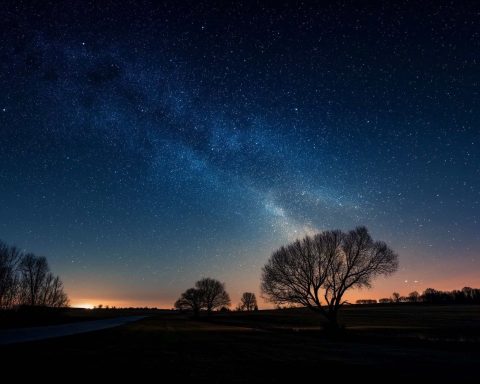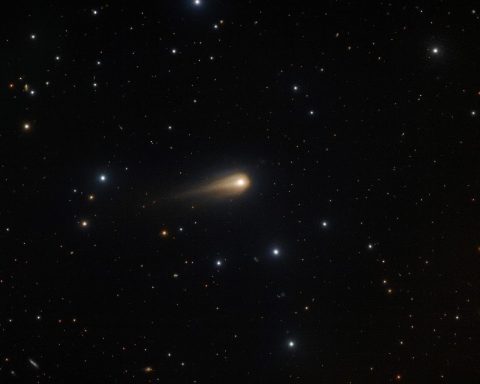- On August 19, CAS Space launched the Lijian-1 (Kinetica-1) Y10 from Jiuquan, deploying seven satellites including ThumbSat-1 and ThumbSat-2 (~100 grams each) built in Mexico.
- The Lijian-1 is the eighth flight in the Kinetica-1 series and CAS Space says it can loft 50+ satellites per mission with launch costs below $10,000 per kilogram to orbit, including an X-band radar Earth-imaging satellite and a Tianyan-26 cubesat.
- Roscosmos launched the Bion-M No.2 biosatellite on August 20 aboard a Soyuz-2.1b from Baikonur, carrying 75 mice, over 1,000 fruit flies, microorganisms, plant seeds and cell cultures for a 30-day microgravity and radiation exposure.
- NASA’s Artemis program advanced as the SLS core stage engine section was moved into the Vehicle Assembly Building and mated with the boat-tail structure for Artemis III, planned for 2027 to carry four astronauts and dock with a SpaceX Starship lander at the lunar south pole.
- ISRO revealed a plan for a 120-meter-tall ultra-heavy-lift rocket capable of placing 75,000 kg to LEO, about 40 storeys tall, to expand India’s capability toward a super-heavy launch vehicle.
- NASA-ISRO’s NISAR radar satellite achieved a milestone by unfurling its 12-meter diameter reflector on August 15, 2025, the largest radar antenna ever deployed by a NASA mission, enabling near-global observations every 12 days with dual L-band and S-band radars.
- NASA and ESA announced the discovery of a new Uranus moon, S/2025 U1, about 10 km across, bringing Uranus’s known moons to 29 and notching Webb’s first inner-moon detection.
- NASA’s Psyche probe released Earth and Moon images from roughly 180 million miles away on calibration frames taken July 20 and 23, 2025, as it nears its 2029 arrival at the metal-rich asteroid Psyche.
- The US Space Force’s X-37B OTV-8 spaceplane is scheduled for a late-August 21, 2025 launch from Cape Canaveral on a SpaceX Falcon 9 to test high-bandwidth laser links and a quantum inertial navigation system.
- More than 50 nations have signed NASA’s Artemis Accords, with new participants from Africa and South America, reflecting broad international support for responsible lunar exploration.
In the past 48 hours, the global space community has witnessed a flurry of activity – from ambitious rocket launches on multiple continents to groundbreaking scientific discoveries and strategic moves in space policy. Below is an in-depth roundup of the major satellite and space-related developments from August 19 to August 20, 2025, with sources and expert insights.
Liftoffs Around the Globe
China’s Commercial Rocket Makes International Waves: On August 19, Chinese startup CAS Space launched its Lijian-1 (Kinetica 1) Y10 rocket carrying seven satellites into orbit from the Jiuquan spaceport in the Gobi Desert [1] [2]. Among these were two tiny experimental satellites built in Mexico – ThumbSat-1 and ThumbSat-2 – each weighing only ~100 grams [3]. One carries a camera to snap a “mirror-selfie” in orbit, and the other an artistic payload, highlighting that space exploration can blend science with creativity [4]. CAS Space lauded the mission as a “groundbreaking cooperation between China and Mexico” and a milestone for China’s commercial launch industry expanding into the international market [5]. The launch (the eighth in the Kinetica-1 series) successfully deployed all satellites, including an X-band radar Earth-imaging satellite and a Tianyan-26 remote sensing cubesat [6]. Chinese officials noted this rocket model can eventually loft 50+ satellites per mission and has driven launch costs below $10k per kg to orbit [7] [8], underlining China’s push for high-volume, cost-effective launch capabilities.
Russia Orbits a “Noah’s Ark” of Life: On August 20, Roscosmos launched the long-awaited Bion-M No.2 mission aboard a Soyuz-2.1b rocket from Baikonur Cosmodrome [9]. This biosatellite carries an entire menagerie of organisms to space for a month-long research stay. On board are 75 mice and over 1,000 fruit flies, plus colonies of microorganisms, plant seeds, and cell cultures – a payload so diverse that Russian officials have dubbed it a “miniature mouse hotel” and “Noah’s Ark” in orbit [10] [11]. The capsule will expose these living specimens to microgravity and heightened cosmic radiation for 30 days before returning them to Earth by parachute for study [12] [13]. Scientists aim to gather data on how spaceflight affects biological tissues and health – including insights into radiation’s impacts on living organisms – to inform future deep-space missions and medical support for astronauts [14] [15]. Notably, this mission also includes tubes of lunar soil simulant riding along, to see how moondust materials are altered by a month in space, which could guide plans for building infrastructure on the Moon [16] [17]. Bion-M No.2 is Russia’s first such bio-research satellite since 2013, signaling a revival of Russian life-sciences experimentation in orbit.
Space Agencies Aim High: Artemis & Ambitions
NASA’s Moon Rocket Progress: Even as the Artemis II mission (NASA’s next crewed Moon fly-around) undergoes final testing, work has already begun on assembling the Artemis III mega-rocket that will one day land astronauts on the Moon’s south pole [18] [19]. NASA teams at Kennedy Space Center moved the Space Launch System (SLS) core stage engine section for Artemis III into the iconic Vehicle Assembly Building and mated it with its boat-tail protective structure [20]. They are keeping the engine section environmentally controlled as remaining tank and engine components are prepared off-site [21] [22]. This early integration work – happening in parallel with Artemis II preparations – shows NASA gearing up for a steady cadence of lunar missions. Artemis III is slated for 2027, when it will carry four astronauts and dock with a SpaceX Starship lander to achieve the first crewed lunar south pole landing [23]. The start of Artemis III rocket processing marks “the buildup” of the hardware that will “help power the Artemis missions to the Moon”, NASA officials said [24], bringing humanity a step closer to Mars as well.
ISRO’s Giant Leap in Rocketry: The Indian Space Research Organisation (ISRO) used this week to reveal bold plans for its next-generation heavy-lift launcher. ISRO Chairman S. Somanath (V. Narayanan) announced that India is developing a rocket as tall as a 40-story building, capable of lofting 75,000 kg (75 tons) to low-Earth orbit [25] [26]. This ultra-heavy booster – about 120 meters in height – would give India a launch vehicle in the super-heavy class, rivaling the lift capacity of SpaceX’s Starship or NASA’s SLS. “Today, we are conceiving a rocket to place 75,000 kg in LEO. The rocket is of 40-storey building height,” Narayanan said during a convocation address [27]. The motivation is clear: India has 55 satellites in orbit currently, and ISRO plans to triple that fleet within 3–4 years to meet growing demand [28]. A booster of this magnitude would dramatically expand India’s ability to launch large satellites and even deep-space missions indigenously. ISRO’s chief noted upcoming projects this year as well – including a Navigation satellite, a new small N1 rocket test, and launching a 6.5-ton U.S.-built communications satellite on an Indian rocket [29] [30] – underscoring India’s rising role in both commercial and strategic space services. These announcements signal a significant policy and capability shift for India, aiming to join the elite club of super-heavy launch providers.
Massive Radar Satellite Unfolds: In a successful example of international collaboration, the NASA-ISRO Synthetic Aperture Radar (NISAR) Earth observation satellite achieved a key milestone in orbit. This week mission teams at NASA’s JPL and ISRO confirmed NISAR unfurled its record-breaking 12-meter (39-foot) diameter radar antenna reflector in space [31] [32]. The gold-mesh dish “bloomed” open on August 15 after a multi-day deployment process, marking the largest radar antenna ever deployed by a NASA mission [33] [34]. “The successful deployment of NISAR’s reflector marks a significant milestone in the capabilities of the satellite,” said Dr. Karen St. Germain, NASA’s Earth Science Division director [35]. NISAR, launched July 30, 2025, will now use its dual L-band and S-band radars to scan nearly the entire globe every 12 days, monitoring changes in ice sheets, landforms, volcano deformation, and ecosystems with unprecedented detail [36] [37]. The giant reflector, which was stowed like a folded umbrella during launch, is critical to achieving the mission’s high resolution – equivalent to what a 12-mile-wide conventional antenna would see [38]. Phil Barela, NISAR’s project manager at JPL, highlighted the years of engineering behind this “largest antenna reflector ever deployed for a NASA mission”, calling its flawless opening “a critical achievement” that enables transformative science by later this year [39] [40]. NISAR’s success showcases growing US-India cooperation and will provide a flood of data to help with natural disaster response, resource management, and climate change research [41] [42].
New Discoveries at the Final Frontier
Webb Finds a New Moon at Uranus: One of the most exciting scientific developments came from NASA/ESA’s James Webb Space Telescope (JWST). Astronomers using Webb announced the discovery of a previously unknown moon orbiting Uranus, bringing the planet’s moon count to 29 [43]. The tiny moon, provisionally labeled S/2025 U1, is estimated to be only ~6 miles (10 km) across [44] [45]. It was “spotted in a series of 10 long-exposure images” Webb captured on Feb. 2, 2025, said Dr. Maryame El Moutamid of Southwest Research Institute, who led the finding. “It’s a small moon but a significant discovery, which is something even NASA’s Voyager 2 spacecraft didn’t see during its flyby nearly 40 years ago,” El Moutamid noted [46]. Indeed, Voyager 2’s 1986 Uranus flyby found 10 new moons, but this one eluded detection until Webb’s sharp infrared eyes came along. The new moon orbits within Uranus’s inner ring system, and its faintness suggests there could be even smaller moons yet undetected. Dr. Matthew Tiscareno of the SETI Institute, part of the research team, commented that “no other planet has as many small inner moons as Uranus, and their complex inter-relationships with the rings hint at a chaotic history… the new moon is smaller and much fainter than the smallest of the previously known inner moons, making it likely that even more complexity remains to be discovered.” [47] This discovery – announced on Aug. 19 – underscores JWST’s power in planetary science: revealing hidden details in our own solar system even as it peers at exoplanets and distant galaxies [48] [49].
Psyche Looks Homeward: Meanwhile, NASA’s Psyche probe, currently en route to the metal-rich asteroid of the same name, delivered a poignant perspective from deep space. In July, as part of an instrument calibration, Psyche turned its cameras back toward Earth and snapped images of our planet and Moon from ~180 million miles away [50]. On Aug. 19, NASA released these images, which show Earth and its Moon as tiny dots “sparkling with reflected sunlight” against the black of space [51]. The long-exposure shots – taken on July 20 and 23 – helped the mission team test Psyche’s multispectral imager in conditions akin to imaging its asteroid target [52] [53]. Scientists chose familiar bright objects like Earth/Moon to ensure the cameras were performing well. The successful calibration indicates Psyche’s imagers are ready to capture high-resolution, multiwavelength photos of Asteroid Psyche when the spacecraft arrives in 2029 [54] [55]. Psyche’s journey, a collaboration between NASA’s JPL and Arizona State University, aims to study the exposed metal core of an early planet – and these recent images of home are a reminder of the vast distance the probe has already traveled in the name of exploration [56] [57].
Other Science Updates: In other news, NASA and European scientists are abuzz about a possible new exoplanet atmosphere finding (courtesy of Webb narrowing down traits of Earth-sized exoplanet TRAPPIST-1d [58]), and data from missions like SWOT (a US-French satellite) was recently used to measure a tsunami’s effects [59]. While those findings emerged slightly earlier, they highlight the ongoing stream of scientific insight from satellites and space telescopes. No major space weather events disrupted operations (see below), allowing researchers to continue collecting observations ranging from distant galaxies to Earth’s changing environment.
Space Weather Watch: Solar Calm with Minor Storms
Space weather has been relatively quiet over the past two days. The Sun is near the peak of its 11-year cycle, but no large solar flares or radiation storms struck Earth this week. The NOAA Space Weather Prediction Center reported only low-level activity (Radio Blackout level R0, Solar Radiation Storm S0, Geomagnetic G0) on Aug. 19 [60]. However, scientists did issue a minor geomagnetic storm watch (G1) for Aug. 19–20 due to a high-speed solar wind stream from a coronal hole, possibly enhanced by a faint coronal mass ejection that erupted on Aug. 17 [61] [62]. This means auroras might be visible at high latitudes – potentially dipping into southern Canada or Maine – during strong periods of geomagnetic activity [63] [64]. Indeed, a Kp4 geomagnetic disturbance was observed early on the 19th as anticipated [65], though impacts were minimal. Power grids and satellite operators were advised to stay vigilant for any minor fluctuations [66]. Fortunately, no significant solar flare eruptions (M-class or above) occurred, and the radiation risk for astronauts and aircraft remained low [67] [68]. Space weather forecasters note that while the Sun is active, the next couple of days are expected to stay in the mild range, with only moderate auroral displays and no major disruptions – good news for satellites, communications, and the planned launches this week.
Defense and Space Security Updates
Spaceplane Set for Secret Mission: The United States Space Force is gearing up to launch its not-so-secret X-37B reusable spaceplane on a new mission, scheduled for late Aug. 21 from Kennedy Space Center. This will be the 8th flight of the uncrewed mini-shuttle (designated OTV-8) – a vehicle that looks like a scaled-down space shuttle orbiter and can spend years in orbit autonomously [69] [70]. The upcoming mission’s exact duration and objectives are classified, but officials have revealed it will test cutting-edge technologies: “high-bandwidth inter-satellite laser communications and enhanced space navigation using the highest performing quantum inertial sensor in space,” according to a Space Force press release [71]. Essentially, the X-37B will trial laser data links between satellites – a more secure, high-capacity alternative to radio – and a quantum-based navigation system that could allow precise maneuvering without GPS [72] [73]. These tech demos are part of a broader push to make U.S. orbital assets more resilient and self-reliant. “This mission is about more than innovation. It’s about making our Joint Force more connected, more resilient, and ready to operate in the face of any challenge,” wrote Gen. Chance Saltzman, the U.S. Chief of Space Operations, highlighting the military importance of the X-37B’s work [74]. The launch will be carried out by a SpaceX Falcon 9 rocket, with a window opening late Thursday night. The FAA has issued airspace notices for a launch between 11:40 p.m. Aug. 21 and 5:11 a.m. EDT Aug. 22 [75]. Once in orbit, the X-37B’s activities will largely remain under wraps until it glides back to Earth for a landing (the last X-37B stayed aloft a record 908 days) [76]. This mission underscores the growing focus on space security: both superpowers and new space nations are investing in technologies to protect satellites and prepare for potential conflict in space. As Gen. Saltzman noted, the goal is to “enhance the resilience and flexibility of U.S. orbital systems” and secure the space domain [77].
Global Policy and Collaboration: In the geopolitical arena, cooperation and competition continue to shape space activities. China’s launch of Mexican satellites this week is a prime example of cross-border collaboration, even as traditional alliances also strengthen – over 50 nations have now signed onto NASA’s Artemis Accords for responsible exploration, most recently African and South American countries, indicating broad support for U.S.-led lunar norms. Meanwhile, Russia’s partnership focus appears to tilt toward projects like the proposed China-Russia International Lunar Research Station, though the Bion-M biosatellite involves many Russian institutes and could attract international researchers post-flight [78] [79]. No new major space treaties or policies were signed in the past two days, but space policy experts are actively discussing topics from space debris mitigation to spectrum allocation. For instance, an editorial in SpaceNews this week urged avoiding a “Wild West” scenario on the Moon by refining the Artemis Accords’ implementation [80]. And in India, ISRO’s announcement of launching a U.S. satellite and developing a mega-rocket may signal a more open stance to commercial partnerships and military payloads on Indian launches [81] [82]. All these developments point to an ever-more dynamic space domain where international cooperation, commercial interests, and security concerns are increasingly intertwined.
Sources: The information above is drawn from official announcements and credible news outlets, including NASA and CNSA press releases, Xinhua/China Daily [83] [84], Space.com [85] [86], Reuters, ABC News [87] [88], and Indian press reports [89] [90], as well as expert commentary from scientists and agency officials. These sources provide a comprehensive view of the rapidly evolving space landscape during this period. Each development, be it a launch or discovery, contributes to the larger story of humanity’s push into space – a story that continues to unfold day by day. [91] [92]
References
1. english.www.gov.cn, 2. english.www.gov.cn, 3. global.chinadaily.com.cn, 4. global.chinadaily.com.cn, 5. global.chinadaily.com.cn, 6. english.www.gov.cn, 7. english.www.gov.cn, 8. english.www.gov.cn, 9. www.space.com, 10. www.space.com, 11. www.space.com, 12. www.space.com, 13. www.space.com, 14. www.space.com, 15. www.space.com, 16. www.space.com, 17. www.space.com, 18. www.nasa.gov, 19. www.nasa.gov, 20. www.nasa.gov, 21. www.nasa.gov, 22. www.nasa.gov, 23. www.nasa.gov, 24. www.nasa.gov, 25. www.hindustantimes.com, 26. www.hindustantimes.com, 27. www.hindustantimes.com, 28. www.hindustantimes.com, 29. www.hindustantimes.com, 30. www.hindustantimes.com, 31. scitechdaily.com, 32. scitechdaily.com, 33. scitechdaily.com, 34. scitechdaily.com, 35. scitechdaily.com, 36. scitechdaily.com, 37. scitechdaily.com, 38. scitechdaily.com, 39. scitechdaily.com, 40. scitechdaily.com, 41. scitechdaily.com, 42. scitechdaily.com, 43. science.nasa.gov, 44. science.nasa.gov, 45. science.nasa.gov, 46. science.nasa.gov, 47. science.nasa.gov, 48. science.nasa.gov, 49. science.nasa.gov, 50. www.nasa.gov, 51. www.nasa.gov, 52. www.nasa.gov, 53. www.nasa.gov, 54. www.nasa.gov, 55. www.nasa.gov, 56. www.nasa.gov, 57. www.nasa.gov, 58. www.nasa.gov, 59. www.nasa.gov, 60. keeptrack.space, 61. keeptrack.space, 62. keeptrack.space, 63. keeptrack.space, 64. keeptrack.space, 65. keeptrack.space, 66. keeptrack.space, 67. keeptrack.space, 68. keeptrack.space, 69. abcnews.go.com, 70. abcnews.go.com, 71. abcnews.go.com, 72. abcnews.go.com, 73. abcnews.go.com, 74. abcnews.go.com, 75. abcnews.go.com, 76. abcnews.go.com, 77. abcnews.go.com, 78. www.space.com, 79. www.space.com, 80. spacenews.com, 81. www.hindustantimes.com, 82. www.hindustantimes.com, 83. english.www.gov.cn, 84. global.chinadaily.com.cn, 85. www.space.com, 86. www.space.com, 87. abcnews.go.com, 88. abcnews.go.com, 89. www.hindustantimes.com, 90. www.hindustantimes.com, 91. science.nasa.gov, 92. abcnews.go.com










